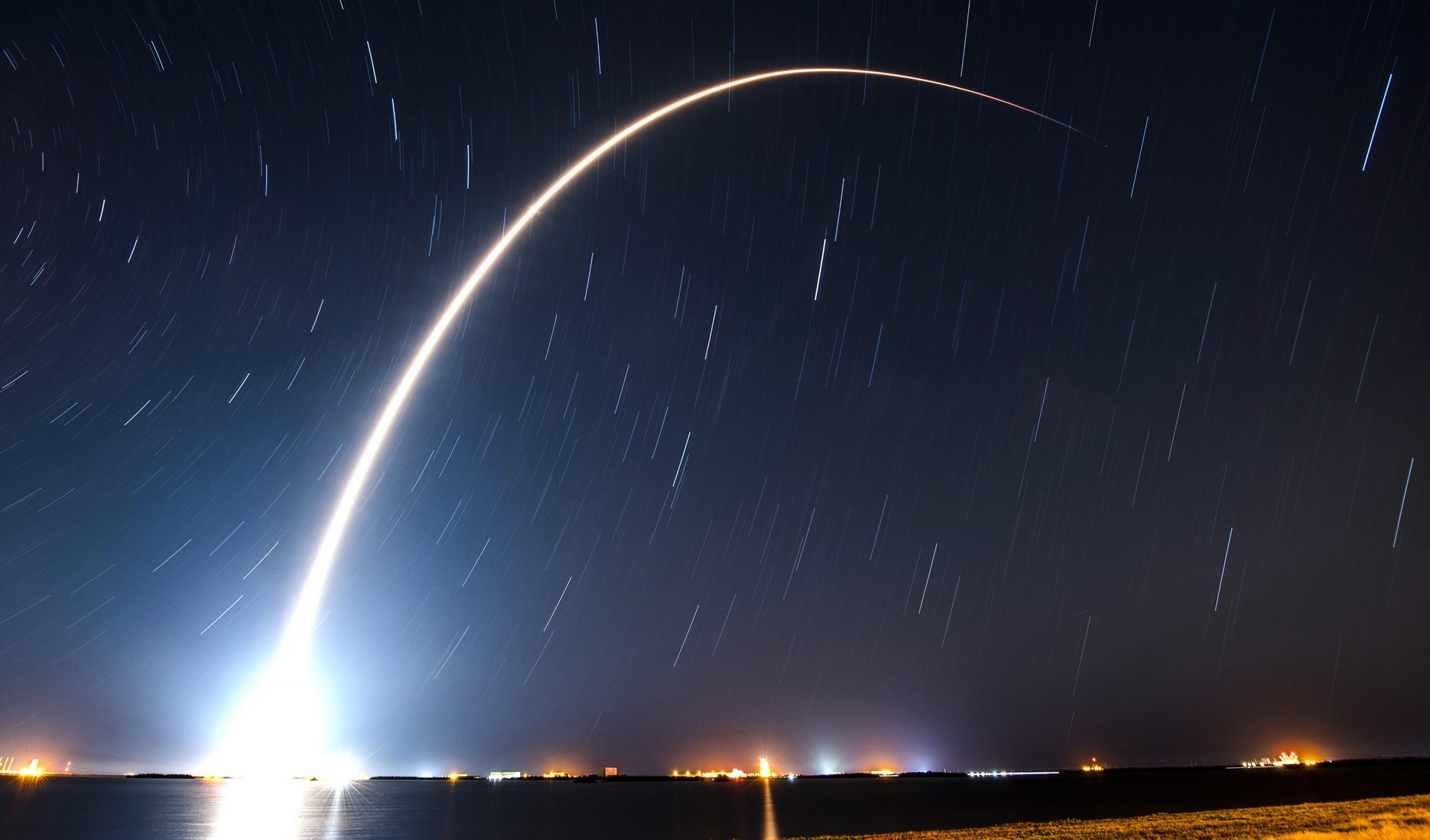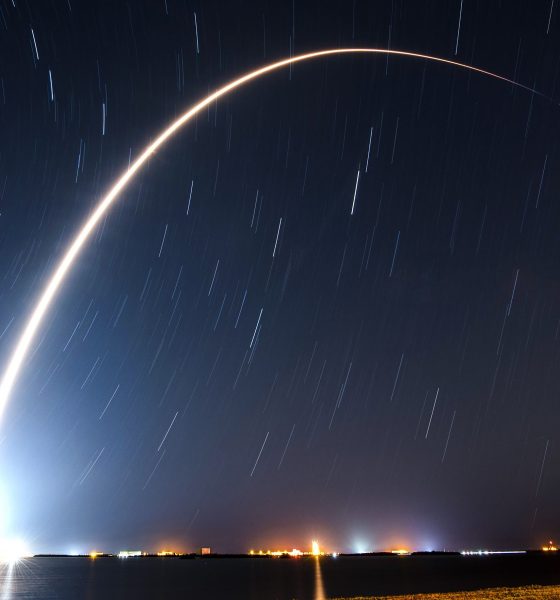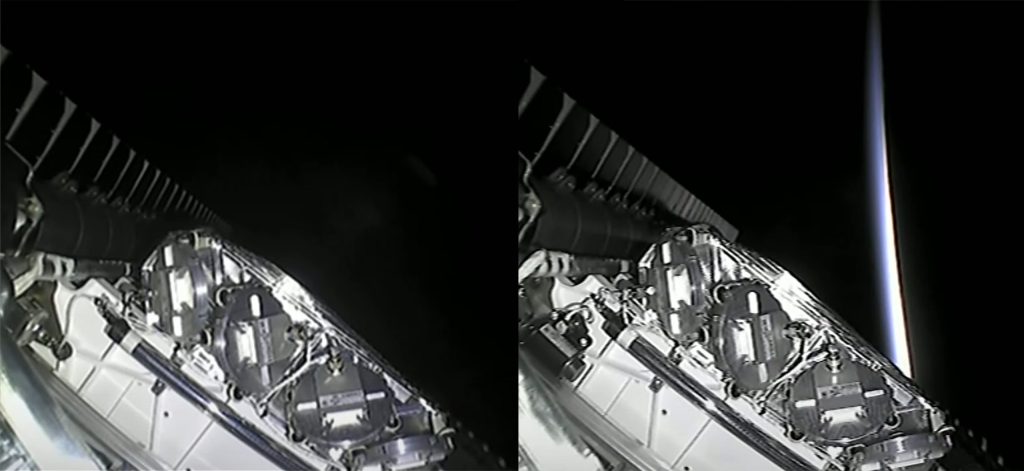

News
SpaceX aces 60th orbital launch of 2022
SpaceX has completed its 60th orbital launch of 2022, marking the first time the company has fully hit a public cadence target set by one of its executives.
By every possible measure, 2022 has been a groundbreaking year for SpaceX even when considering the vast list of achievements it’s racked up over the last half-decade. It owns and operates the largest satellite constellation in history by an order of magnitude. Its Starlink satellite internet service has secured more than a million subscribers less than two years after entering beta. It operates the only routinely reusable orbital-class rockets and orbital spacecraft currently in service. Its Falcon 9 workhorse has launched more in one year than any other single rocket in history. It’s regularly launching at a pace that hasn’t been sustained by any one country – let alone a single company – in 40 years. It’s managing that near-historic cadence while simultaneously recovering and reusing boosters and fairings that represent some 70% of the value of almost every rocket it launches.
And now, SpaceX can also proudly show that it was able to hit a launch cadence target that seemed impossibly ambitious when CEO Elon Musk first shared it nine months ago.
The update that's rolling out to the fleet makes full use of the front and rear steering travel to minimize turning circle. In this case a reduction of 1.6 feet just over the air— Wes (@wmorrill3) April 16, 2024
Exactly nine months later, SpaceX has just completed its 60th launch of 2022. 69 days after its last orbital-class launch, Falcon 9 booster lifted off for the 11th time with a somewhat mysterious batch of 54 Starlink satellites. A bit less than nine minutes after liftoff, B1062 touched down 660 kilometers (410 mi) downrange on SpaceX drone ship A Shortfall Of Gravitas (ASOG). Seconds prior, Falcon 9’s expendable upper stage reached orbit, shut down its lone Merlin Vacuum engine, and began slowly spinning itself end over end.
Nineteen minutes after leaving the ground, the stack of 54 Starlink satellites was released all at once, slowly spreading out like a splayed deck of cards. Over the coming hours, days, and weeks, those satellites will naturally spread out, deploy solar arrays, stabilize their attitudes, test their payloads, and begin climbing toward an operational orbit somewhere between 480 and 580 kilometers (300-360 mi) above Earth’s surface.
As previously discussed, SpaceX’s so-called “Starlink 5-1” mission raises a number of questions that the company’s launch webcast and communications unfortunately failed to answer. First and foremost, the “5-1” name is nonsensical. The only information SpaceX did disclose about the mission is that it’s the “first [launch] of Starlink’s upgraded network…under [a] new license,” implying – but not actually confirming – that “Starlink 5-1” is the first launch for the Starlink Gen2 constellation.
The orbit the launch targeted only matches one of the Gen2 ‘shells’ the US Federal Communications Commission (FCC) recently approved. Using a naming scheme that’s been consistent for a year and a half, “5-1” implies that the mission is the first launch of Starlink Gen1’s fifth ‘shell’ or group, which the orbit it was actually launched to explicitly makes impossible. It’s very odd that SpaceX did not explicitly call the mission what it actually is: the first launch of an entirely new Starlink Gen2 constellation. The name ultimately doesn’t matter much, but is now likely to create confusion given that SpaceX’s Starlink Gen1 constellation has a fifth shell that may begin launches in the near future.
Additionally, outside of a single obscure FCC filing submitted two months ago, it’s long been stated and implied that the Starlink Gen2 constellation’s main advantage over Gen1 was the much larger size of the Gen2/V2 satellites. But the satellites launched on “Starlink 5-1” appear to be virtually identical to all recent Starlink V1.5 satellites, which CEO Elon Musk once suggested were so cost-inefficient that they could risk bankrupting SpaceX in November 2021.

There is one obvious explanation for why SpaceX would launch ordinary Starlink V1.5 satellites in place of the larger V2 variants that will supposedly make the internet constellation more financially sustainable: a desire to add new customers as quickly as possible, no matter the relative cost. While a much smaller V1.5 satellite likely offers around 3-8 times less usable bandwidth than one of the larger V2 variants SpaceX is developing, it may still be true that a V1.5 satellite is better than nothing while larger V2 satellites are stuck behind development delays or waiting on SpaceX’s next-generation Starship rocket.
SpaceX will almost certainly want to replace any V1.5 satellites with V2 satellites when the opportunity arises, but in the meantime, V1.5 satellites launched as part of the Gen2 constellation may technically allow SpaceX to temporarily double the amount of bandwidth available where most people (and Starlink customers) live. Ultimately, that means that it makes a lot of sense for SpaceX to prioritize Gen2 launches. It doesn’t appear that SpaceX will go that far, but the Starlink Gen1 constellation is so far along that the company could easily leave the constellation as-is and prioritize Gen2 Falcon 9 launches for all of 2023 without risking an FCC penalty. SpaceX simply needs to finish its Gen1 constellation before April 2027 to avoid breaking those rules.
Instead, it looks like SpaceX will roughly split its launch and V1.5 satellite manufacturing capacity between Starlink Gen1 and Gen2 moving forward. That will let SpaceX significantly expand bandwidth where most customers live while also finishing the polar-orbiting Gen1 shells that will let the older constellation better serve maritime and aviation subscribers, and reach Starlink’s most remote customers.

Elon Musk
Elon Musk and Tesla AI Director share insights after empty driver seat Robotaxi rides
The executives’ unoccupied tests hint at the rapid progress of Tesla’s unsupervised Robotaxi efforts.

Tesla CEO Elon Musk and AI Director Ashok Elluswamy celebrated Christmas Eve by sharing personal experiences with Robotaxi vehicles that had no safety monitor or occupant in the driver’s seat. Musk described the system’s “perfect driving” around Austin, while Elluswamy posted video from the back seat, calling it “an amazing experience.”
The executives’ unoccupied tests hint at the rapid progress of Tesla’s unsupervised Robotaxi efforts.
Elon and Ashok’s firsthand Robotaxi insights
Prior to Musk and the Tesla AI Director’s posts, sightings of unmanned Teslas navigating public roads were widely shared on social media. One such vehicle was spotted in Austin, Texas, which Elon Musk acknowleged by stating that “Testing is underway with no occupants in the car.”
Based on his Christmas Eve post, Musk seemed to have tested an unmanned Tesla himself. “A Tesla with no safety monitor in the car and me sitting in the passenger seat took me all around Austin on Sunday with perfect driving,” Musk wrote in his post.
Elluswamy responded with a 2-minute video showing himself in the rear of an unmanned Tesla. The video featured the vehicle’s empty front seats, as well as its smooth handling through real-world traffic. He captioned his video with the words, “It’s an amazing experience!”
Towards Unsupervised operations
During an xAI Hackathon earlier this month, Elon Musk mentioned that Tesla owed be removing Safety Monitors from its Robotaxis in Austin in just three weeks. “Unsupervised is pretty much solved at this point. So there will be Tesla Robotaxis operating in Austin with no one in them. Not even anyone in the passenger seat in about three weeks,” he said. Musk echoed similar estimates at the 2025 Annual Shareholder Meeting and the Q3 2025 earnings call.
Considering the insights that were posted Musk and Elluswamy, it does appear that Tesla is working hard towards operating its Robotaxis with no safety monitors. This is quite impressive considering that the service was launched just earlier this year.
Elon Musk
Starlink passes 9 million active customers just weeks after hitting 8 million
The milestone highlights the accelerating growth of Starlink, which has now been adding over 20,000 new users per day.

SpaceX’s Starlink satellite internet service has continued its rapid global expansion, surpassing 9 million active customers just weeks after crossing the 8 million mark.
The milestone highlights the accelerating growth of Starlink, which has now been adding over 20,000 new users per day.
9 million customers
In a post on X, SpaceX stated that Starlink now serves over 9 million active users across 155 countries, territories, and markets. The company reached 8 million customers in early November, meaning it added roughly 1 million subscribers in under seven weeks, or about 21,275 new users on average per day.
“Starlink is connecting more than 9M active customers with high-speed internet across 155 countries, territories, and many other markets,” Starlink wrote in a post on its official X account. SpaceX President Gwynne Shotwell also celebrated the milestone on X. “A huge thank you to all of our customers and congrats to the Starlink team for such an incredible product,” she wrote.
That growth rate reflects both rising demand for broadband in underserved regions and Starlink’s expanding satellite constellation, which now includes more than 9,000 low-Earth-orbit satellites designed to deliver high-speed, low-latency internet worldwide.
Starlink’s momentum
Starlink’s momentum has been building up. SpaceX reported 4.6 million Starlink customers in December 2024, followed by 7 million by August 2025, and 8 million customers in November. Independent data also suggests Starlink usage is rising sharply, with Cloudflare reporting that global web traffic from Starlink users more than doubled in 2025, as noted in an Insider report.
Starlink’s momentum is increasingly tied to SpaceX’s broader financial outlook. Elon Musk has said the satellite network is “by far” the company’s largest revenue driver, and reports suggest SpaceX may be positioning itself for an initial public offering as soon as next year, with valuations estimated as high as $1.5 trillion. Musk has also suggested in the past that Starlink could have its own IPO in the future.
News
NVIDIA Director of Robotics: Tesla FSD v14 is the first AI to pass the “Physical Turing Test”
After testing FSD v14, Fan stated that his experience with FSD felt magical at first, but it soon started to feel like a routine.

NVIDIA Director of Robotics Jim Fan has praised Tesla’s Full Self-Driving (Supervised) v14 as the first AI to pass what he described as a “Physical Turing Test.”
After testing FSD v14, Fan stated that his experience with FSD felt magical at first, but it soon started to feel like a routine. And just like smartphones today, removing it now would “actively hurt.”
Jim Fan’s hands-on FSD v14 impressions
Fan, a leading researcher in embodied AI who is currently solving Physical AI at NVIDIA and spearheading the company’s Project GR00T initiative, noted that he actually was late to the Tesla game. He was, however, one of the first to try out FSD v14.
“I was very late to own a Tesla but among the earliest to try out FSD v14. It’s perhaps the first time I experience an AI that passes the Physical Turing Test: after a long day at work, you press a button, lay back, and couldn’t tell if a neural net or a human drove you home,” Fan wrote in a post on X.
Fan added: “Despite knowing exactly how robot learning works, I still find it magical watching the steering wheel turn by itself. First it feels surreal, next it becomes routine. Then, like the smartphone, taking it away actively hurts. This is how humanity gets rewired and glued to god-like technologies.”
The Physical Turing Test
The original Turing Test was conceived by Alan Turing in 1950, and it was aimed at determining if a machine could exhibit behavior that is equivalent to or indistinguishable from a human. By focusing on text-based conversations, the original Turing Test set a high bar for natural language processing and machine learning.
This test has been passed by today’s large language models. However, the capability to converse in a humanlike manner is a completely different challenge from performing real-world problem-solving or physical interactions. Thus, Fan introduced the Physical Turing Test, which challenges AI systems to demonstrate intelligence through physical actions.
Based on Fan’s comments, Tesla has demonstrated these intelligent physical actions with FSD v14. Elon Musk agreed with the NVIDIA executive, stating in a post on X that with FSD v14, “you can sense the sentience maturing.” Musk also praised Tesla AI, calling it the best “real-world AI” today.








